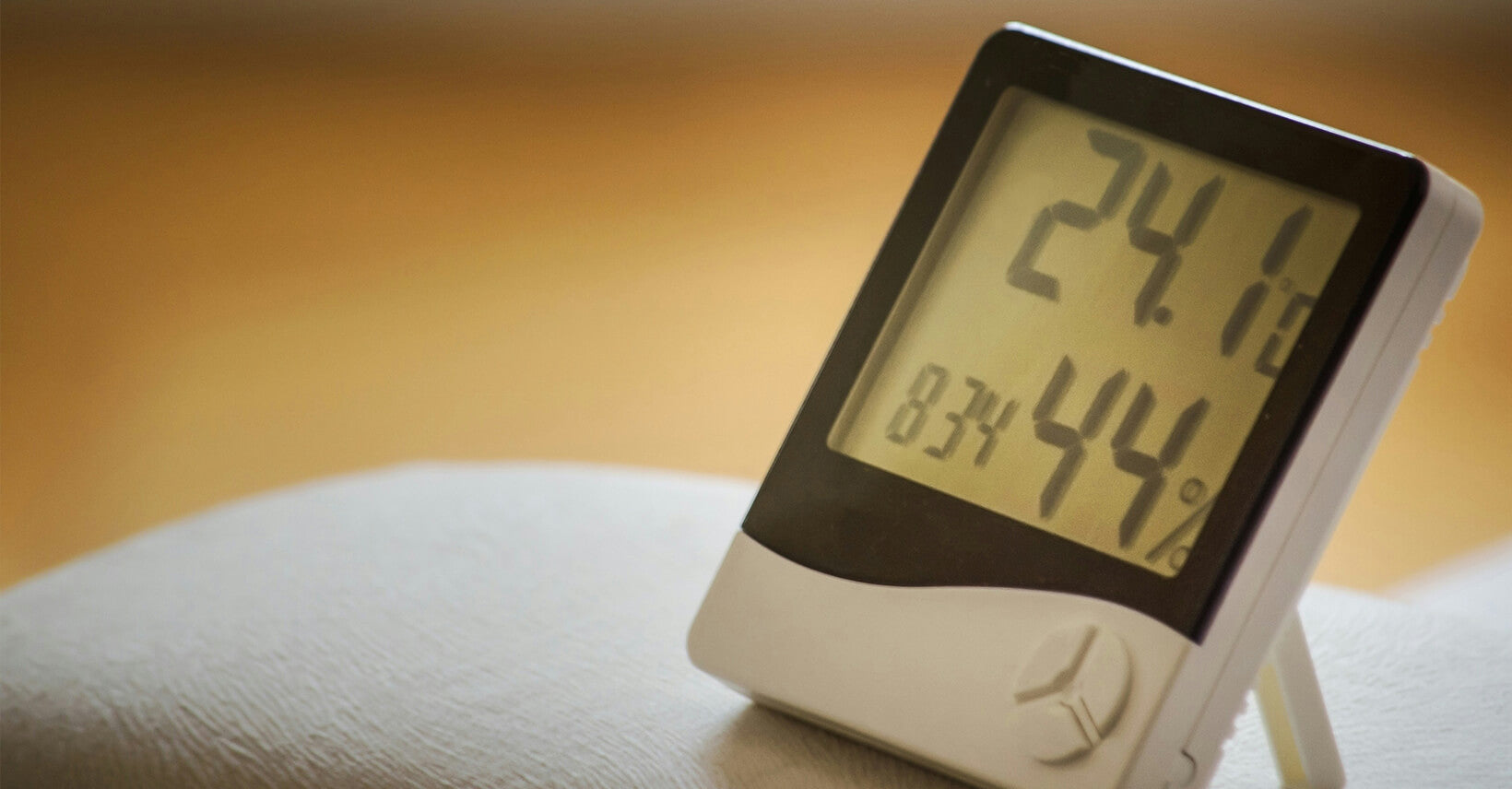


Understanding the needs of a newborn's environment is critical to their comfort and health. From considering the ideal room temperature for different seasons to addressing specific situations like cold or day versus night, it is clear that room temperature plays a vital role in providing the best possible environment. Each situation requires a unique approach to keeping babies safe and ensuring they can sleep soundly.
Summer Room Temperature (75°F - 78°F / 24°C - 26°C)
In the summer, it's best for parents to keep the room temperature between 75°F and 78°F (24°C and 26°C). This temperature range will neither make your baby feel hot nor cold. Newborns are not yet proficient at regulating their own body temperature, so they can easily overheat or cool down. Keeping indoor temperature in this range during summer will help avoid the risk of your baby overheating.
Winter Room Temperature (68°F - 72°F / 20°C - 22°C)
In winter, on the other hand, the temperature is very cold. Keeping the room temperature at 68°F to 72°F (20°C to 22°C) gives the newborn enough warmth to protect the baby from the cold. This temperature is in line with the physiological characteristics of newborns and gives them maximum comfort.
Ideal Room Temperature for Newborns with a Cold
When your baby has a cold, keeping a good room temperature will help them recover as quickly as possible. Setting the room temperature between 70°F and 72°F(21°C to 22°C) is just right for your baby's need for warmth and comfort. So the baby doesn't have to overuse the weak body to regulate body temperature.
During a baby's cold, maintaining the above recommended room temperature can help your baby's respiratory health. Because if you let the baby breathe in cold air may aggravate nasal congestion and respiratory obstruction. Mild air can make the baby's airways more open and reduce irritation, so that the baby feels more comfortable.
Daytime Room Temperature (68°F - 72°F / 20°C - 22°C)
During the day, the setting of the indoor temperature should take into account that the baby is more active than at night, and the body will generate more heat because of exercise. In warm weather, making sure the indoor temperature is in the range of 68°F to 72°F (20°C to 22°C) will help keep your baby comfortable during activity while avoiding overheating
Nighttime Room Temperature (68°F - 72°F / 20°C - 22°C)
At night, it is still recommended to keep the room temperature in the range of 68°F to 72°F (20°C to 22°C). But this does not mean that the temperature at night should be regulated exactly as it is during the day. At night, the baby's activity level is reduced and the body temperature regulation mechanism is relatively unstable. Keeping the temperature warm will help reduce your baby's discomfort from lower nighttime temperatures.

Although the indoor temperature is kept within a similar temperature range regardless of day or night. However, it is not mandatory that daytime and nighttime temperatures be exactly the same. According to the baby's activity, external temperature conditions and other environmental factors, combined with the baby's response to adjust the room temperature, help to ensure the baby's comfort and safety at different times. But no matter how the temperature is adjusted, the ultimate goal is to create a comfortable environment for the baby to meet their temperature needs at different times of the day.
Feel the Back of the Neck: Gently touch the back of your baby's neck or the back of their hand. If their skin feels excessively warm, sweaty, or clammy, it could be an indication of overheating.
Check for Sweating: If you notice your baby's hair or forehead is damp with sweat, it might suggest they are too hot. However, keep in mind that babies may naturally sweat, especially when feeding or active, so consider other cues as well.
Observe Behavior: If your baby seems irritable, fussy, or restless, it could be a sign of discomfort due to overheating. Pay attention to cues like flushed cheeks, rapid breathing, or rapid heart rate.
Touch Their Chest or Tummy: Gently touch your baby's chest or tummy with the back of your hand. If these areas feel cooler than the rest of their body, they might be too cold.
Feel Their Extremities: Check the temperature of your baby's hands and feet. If they are cool to the touch or have a bluish tint, it could indicate that they are feeling cold.
Observe Their Behavior: A baby who is too cold might exhibit signs of discomfort such as fussiness, crying, or shivering. They might also have difficulty settling down for sleep.
Creating a safe and comfortable environment for your newborn involves more than just regulating room temperature. Here are additional factors to consider when setting up your baby's room.
By taking into account these various factors, you can create a nurturing, safe, and comfortable haven for your newborn. As you make these considerations, remember that every baby is unique, so adapt the room setup to suit your baby's individual needs and preferences.

Lily Hou
An expert in sleep sack design, is a valued contributor to Kaiya Baby's blog. With a strong background in baby sleep bags and maternal care, she is highly regarded for her professionalism. Lily prioritizes baby comfort and safety in her designs, using high-quality materials. Her insightful articles on sleep bags have been featured in reputable publications and have gained a significant readership. Trust Lily to help you create a comfortable and safe sleep environment for your baby, backed by her proven track record in the industry.
Leave a comment
This site is protected by hCaptcha and the hCaptcha Privacy Policy and Terms of Service apply.